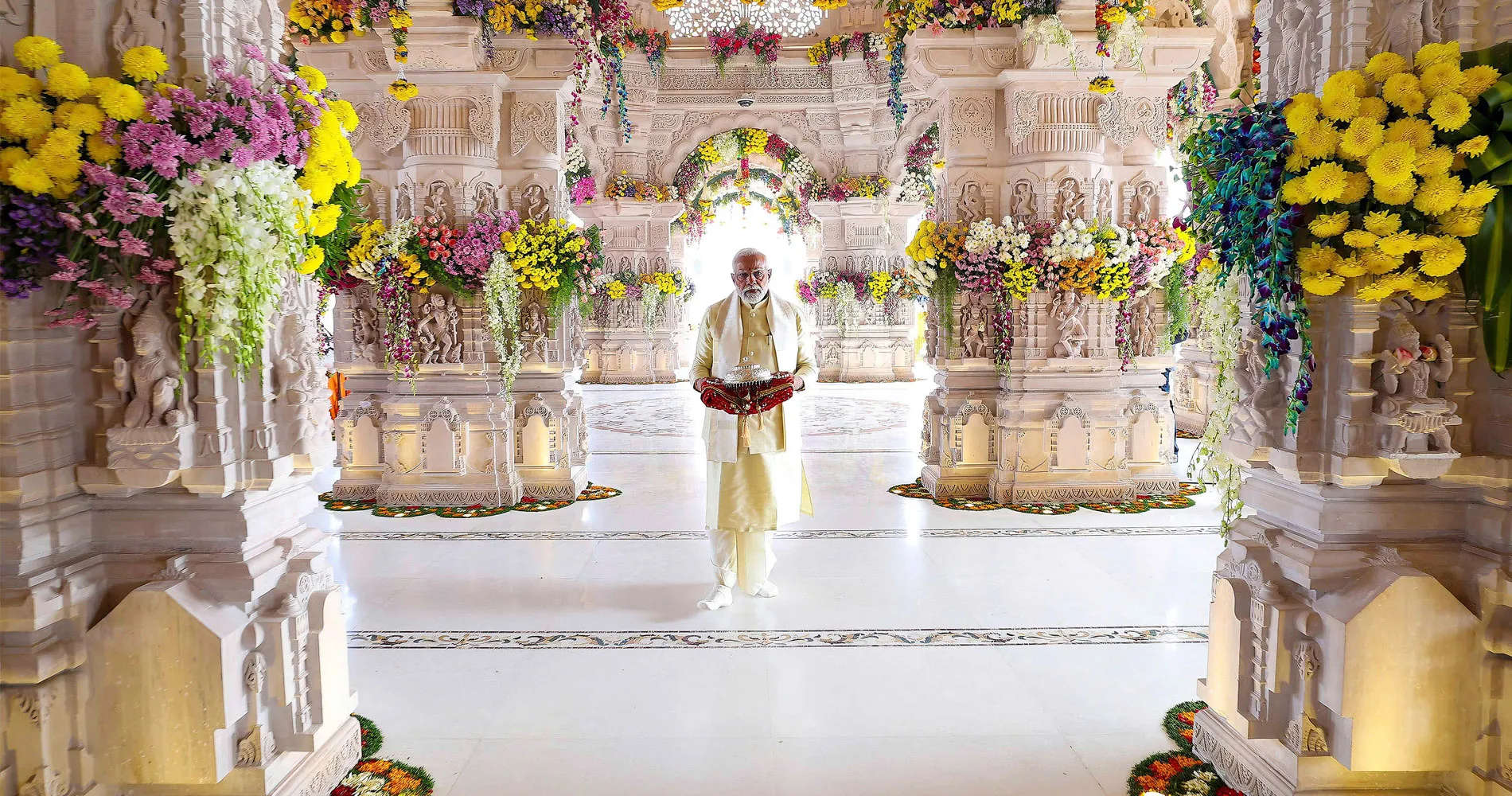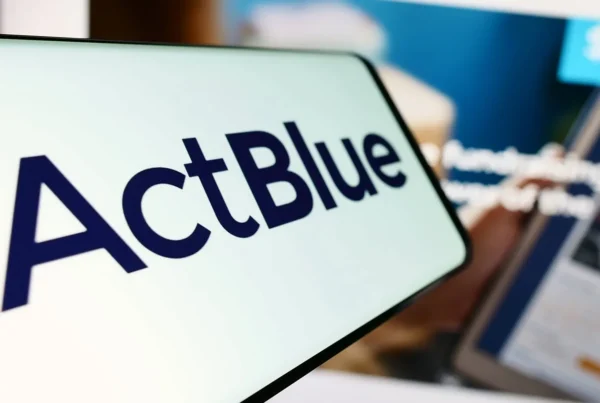India’s Prime Minister Modi’s hate speech against Muslims has reached new heights as his BJP party seeks a third term in the ongoing General Election. Hindu nationalists hail the Ram Temple, erected on the site of the destroyed Babri Mosque, as Modi’s new crown jewel. In a series of rallies, Modi has labelled Muslims as “infiltrators” and looters of Hindu wealth.
Yegor Shestunov
15 May 2024
Arabic version | French version
A rally held in 1992 in Azodhya, India, for the construction of a Hindu temple at the location of the Muslim Babri Mosque turned violent. Within hours the crowd tore down the Babri Mosque using axes and hammers. Its demolition in 1992 and the subsequent construction of the Hindu Ram Temple on its site have remained contentious issues in India, reflecting broader debates about religious freedom, minority rights and its political implications.
Prime Minister Modi has instrumentalized the Ram Temple to fuel Hindu nationalist sentiment leading up to the General Elections which are taking place from 19 April to 1 June 2024 throughout India. In the midst of India’s election, President Droupadi Murmu offered prayers at the Ram Temple in Ayodhya on 2 May. Following President Droupadi Murmu’s visit to Shri Ram Janma, the chief priest Acharya Satyendra remarked “It felt great. … This is a lesson to all devotees of Lord Ram – how devoted the Prime Minister and President are to Lord Ram.”
For Indian Muslims, the anniversary of the Babri Mosque demolition is a solemn occasion, commemorated as a “Black Day” to remember the loss of innocent lives and the ongoing struggle for legal and religious rights in India. Despite the mosque’s quick destruction within just a few hours, the legal battle over the site persisted for years. It was only in 2019 that the Supreme Court of India ruled that a Hindu temple could be built on the site while also ordering the allocation of land for the construction of a new mosque, aiming to address the grievances of the Muslim community.
For centuries, the site was peacefully used for religious purposes by both Hindus and Muslims, but since the 19th century tensions became visible: although the mosque built by the Mughal commander Mir Baqi in 1528 stood there for centuries, there is archaeological evidence of structures pre-dating the mosque, variously identified as Hindu and Buddhist structures.
Hindu tradition holds the site sacred: the claim that the mosque stood on the site of a temple was first made in 1822 by an official from the Indian Faizabad court. This statement was later used by the Nirmohi Akhara sect to justify the claim to the site, and the first incidents of religious violence began three decades later, in 1855. In response, the British colonial administration set up a railing to separate the outer courtyard of the mosque to avoid disputes. For almost a century the status quo remained, until in 1949 Hindu Mahasabha nationalists placed the idols of Rama inside the mosque. The provocation proved to be fruitful, and tensions grew as both Hindus and Muslims started filing civil suits claiming the land. The gates to the mosque were locked, and remained locked until 1986.
The active dispute over the site, believed to be the birthplace of the Hindu deity Rama, began in 1980s when the Hindu nationalist groups led by Vishva Hindu Parishad and politically supported by the Modi’s Bharatiya Janata Party (BJP) began advocating for the construction of a temple dedicated to Rama. In 1986, based on the decision of a district judge, the gates were reopened.
In 1992 there was another rally of 150 000 people, organized by Vishva Hindu Parishad Party and the BJP. As the rally continued, the restlessness grew. At around noon a young man climbed the mosque and waived a saffron flag. The supporters stormed the structure and the police cordon, vastly outnumbered and unprepared, fled.
Some of those who were there and recall the events, however, believe that the demolition was meticulously planned and by no means accidental, and refuse to accept the Central Bureau of Investigation’s verdict that the demolition was not pre-planned. “Only a wilfully blind person could be convinced that there was no conspiracy and that the mosque was razed by an impulsive, angry mob comprising anti-social elements, believed to have sneaked into the ancient temple town under the garb of karsevaks (religious volunteers who demanded the Ram temple in Ayodhya). And it would require a wilfully deaf person to accept the court’s theory that the top BJP and Vishwa Hindu Parishad leaders, present at the hotspot on that fateful day, actually tried to save the mosque, rather than incite anyone,” wrote Sharat Pradhan in 2020.
While Hindu devotees celebrate the temple’s completion, Muslim groups and international observers express concern over the rule of law, religious tolerance and minority rights in India. Prime Minister Modi Narendra Modi opened the Ram Temple on 22 January 2024. For Modi the temple’s opening was the start of his re-election campaign and a landmark moment to fulfil a decades-long promise to align the country’s governance with India’s majority Hindu faith.
The Ram Temple rightfully reignited fears of further destruction of Islamic heritage sites in India. Reports of threats to other mosques from Hindu nationalist groups underscore the fragile state of religious harmony in the country. International observers, including the U.S. Commission on International Religious Freedom, have raised concerns about the security of places of worship in India, highlighting instances of communal violence and the destruction of religious landmarks.
Critics accuse Prime Minister Modi of exploiting religious sentiments for political gains, with concerns raised about the erosion of India’s secular democratic values and denial of freedom of religion to religious minorities. This is not a first-time occurrence: although no explicit evidence was found, some scholars believe that Modi is directly responsible for mishandling the 2002 Gurajat riots, and blame him for a death toll of over 2000 people, vast majority of whom were Muslims. And, more than 20 years later, in May 2023, the ethnic tensions in Manipur resulted in violent clashes – and Modi was yet again criticized for his lack of reaction towards the violence.
During this election, PM Modi wants to distract from India’s underlying socio-economic challenges, which include high youth unemployment and chronic poverty. Income inequality has worsened, and certain regions, like southern states, feel marginalized in national politics.
Despite efforts to rebrand himself as a leader focused on economic development, Modi’s recent speeches have turned into divisive rhetoric. In his latest speeches he implies that minority groups, particularly Muslims, would benefit unfairly from government resources under opposition rule. This narrative plays into Hindu nationalist sentiments and aims to consolidate support from the Hindu fundamentalists. The Election Commission of India has been prompted to investigate complaints about Modi’s recent inflammatory speeches.







